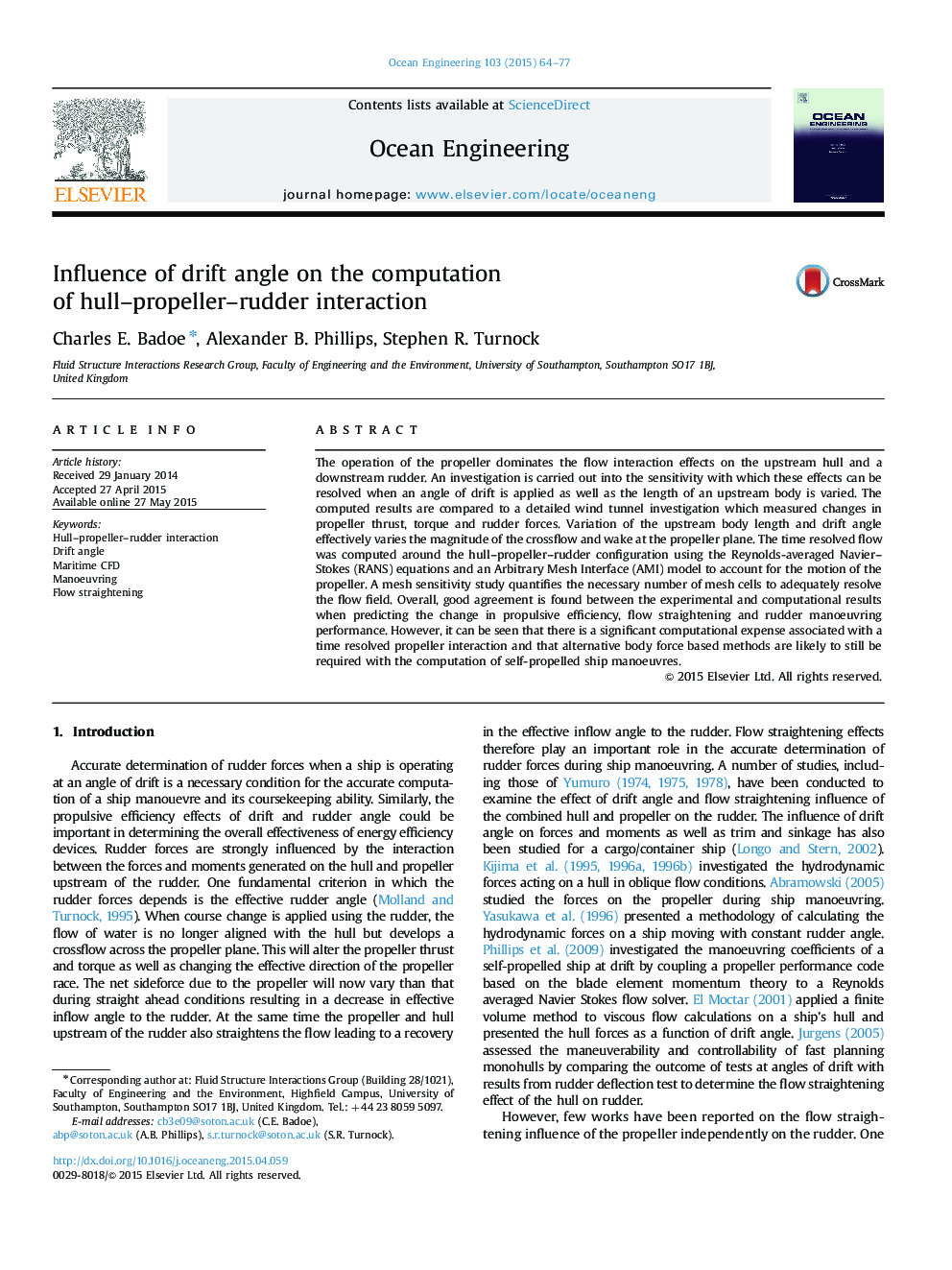| Article ID | Journal | Published Year | Pages | File Type |
|---|---|---|---|---|
| 1725440 | Ocean Engineering | 2015 | 14 Pages |
Abstract
The operation of the propeller dominates the flow interaction effects on the upstream hull and a downstream rudder. An investigation is carried out into the sensitivity with which these effects can be resolved when an angle of drift is applied as well as the length of an upstream body is varied. The computed results are compared to a detailed wind tunnel investigation which measured changes in propeller thrust, torque and rudder forces. Variation of the upstream body length and drift angle effectively varies the magnitude of the crossflow and wake at the propeller plane. The time resolved flow was computed around the hull-propeller-rudder configuration using the Reynolds-averaged Navier-Stokes (RANS) equations and an Arbitrary Mesh Interface (AMI) model to account for the motion of the propeller. A mesh sensitivity study quantifies the necessary number of mesh cells to adequately resolve the flow field. Overall, good agreement is found between the experimental and computational results when predicting the change in propulsive efficiency, flow straightening and rudder manoeuvring performance. However, it can be seen that there is a significant computational expense associated with a time resolved propeller interaction and that alternative body force based methods are likely to still be required with the computation of self-propelled ship manoeuvres.
Keywords
Related Topics
Physical Sciences and Engineering
Engineering
Ocean Engineering
Authors
Charles E. Badoe, Alexander B. Phillips, Stephen R. Turnock,
